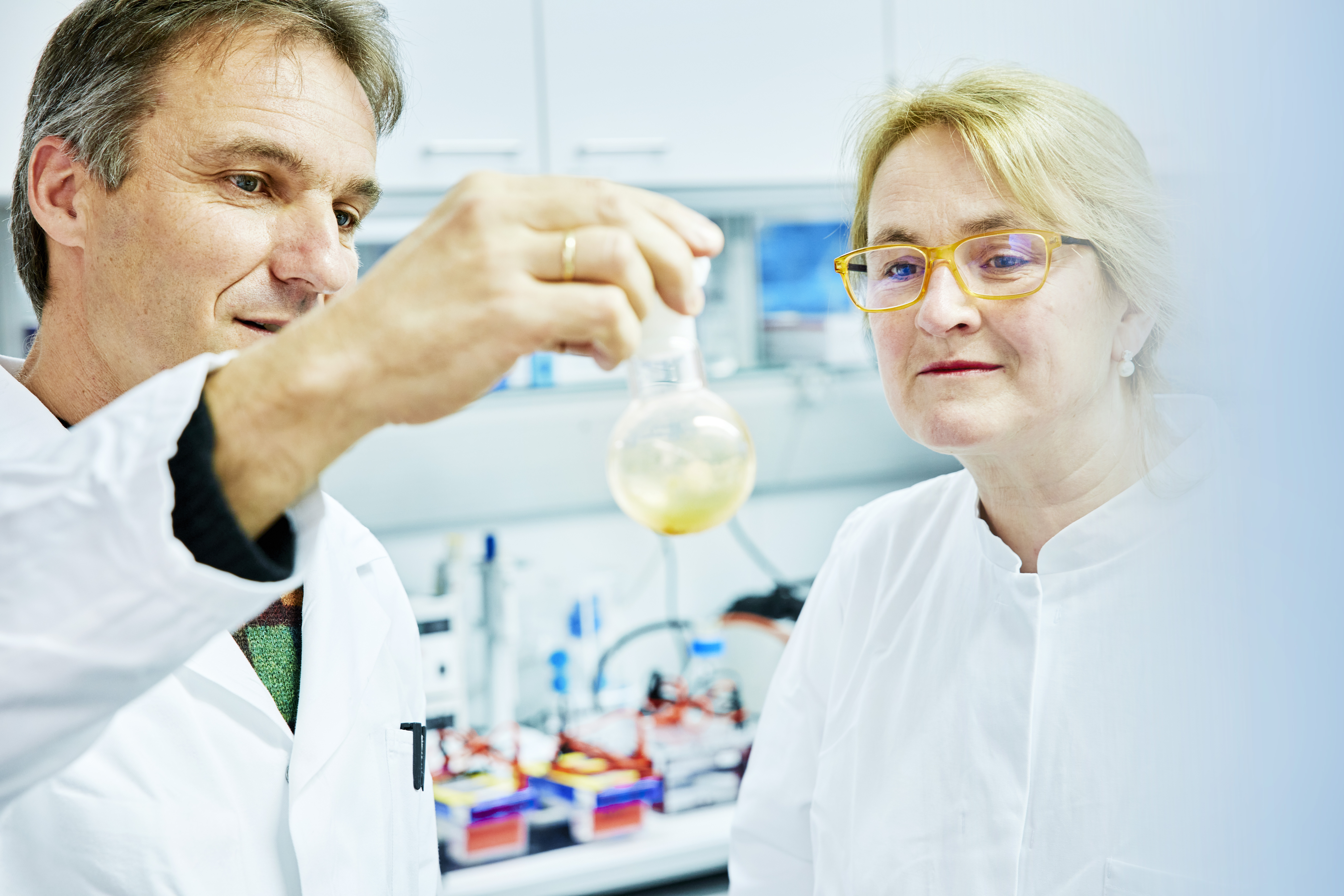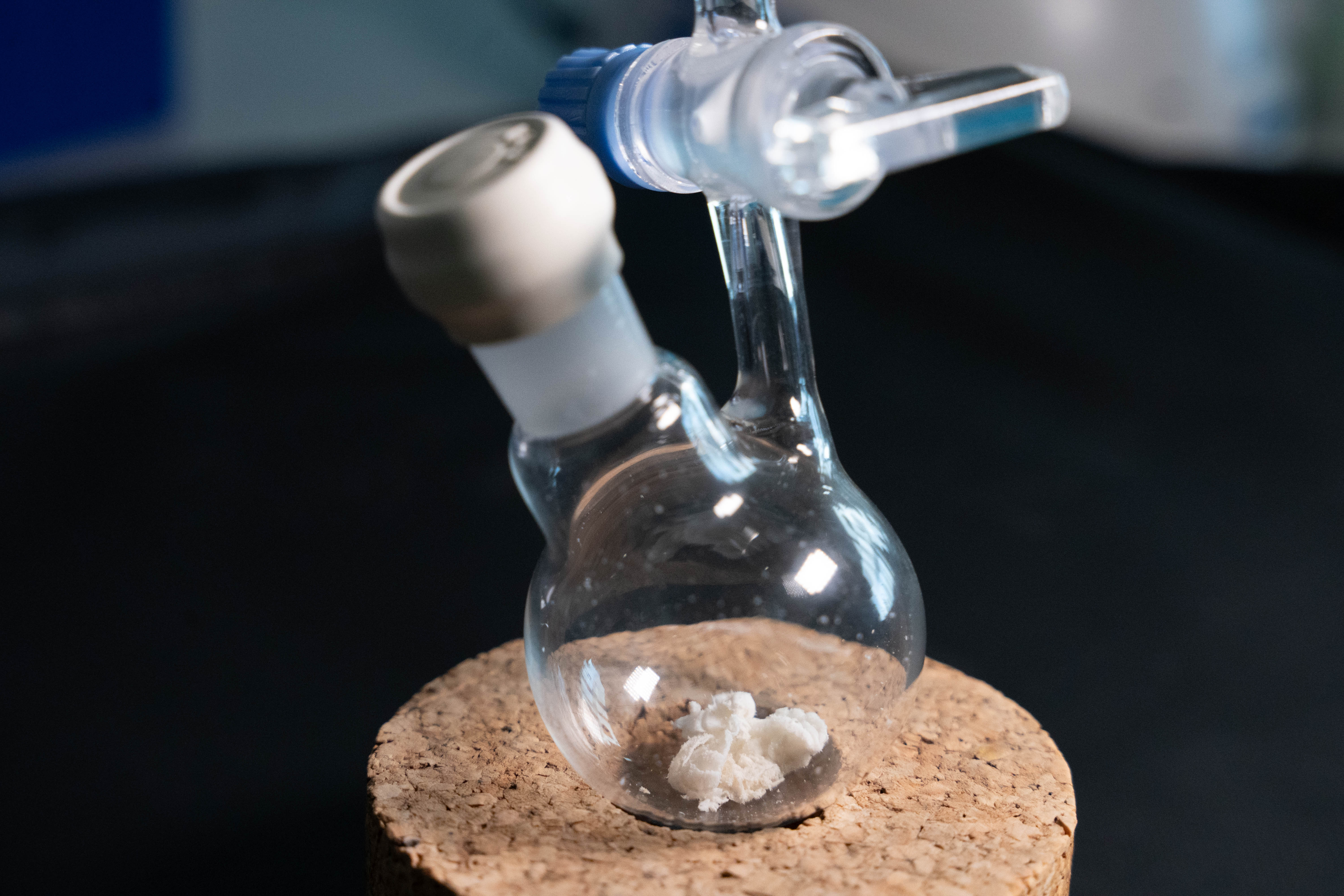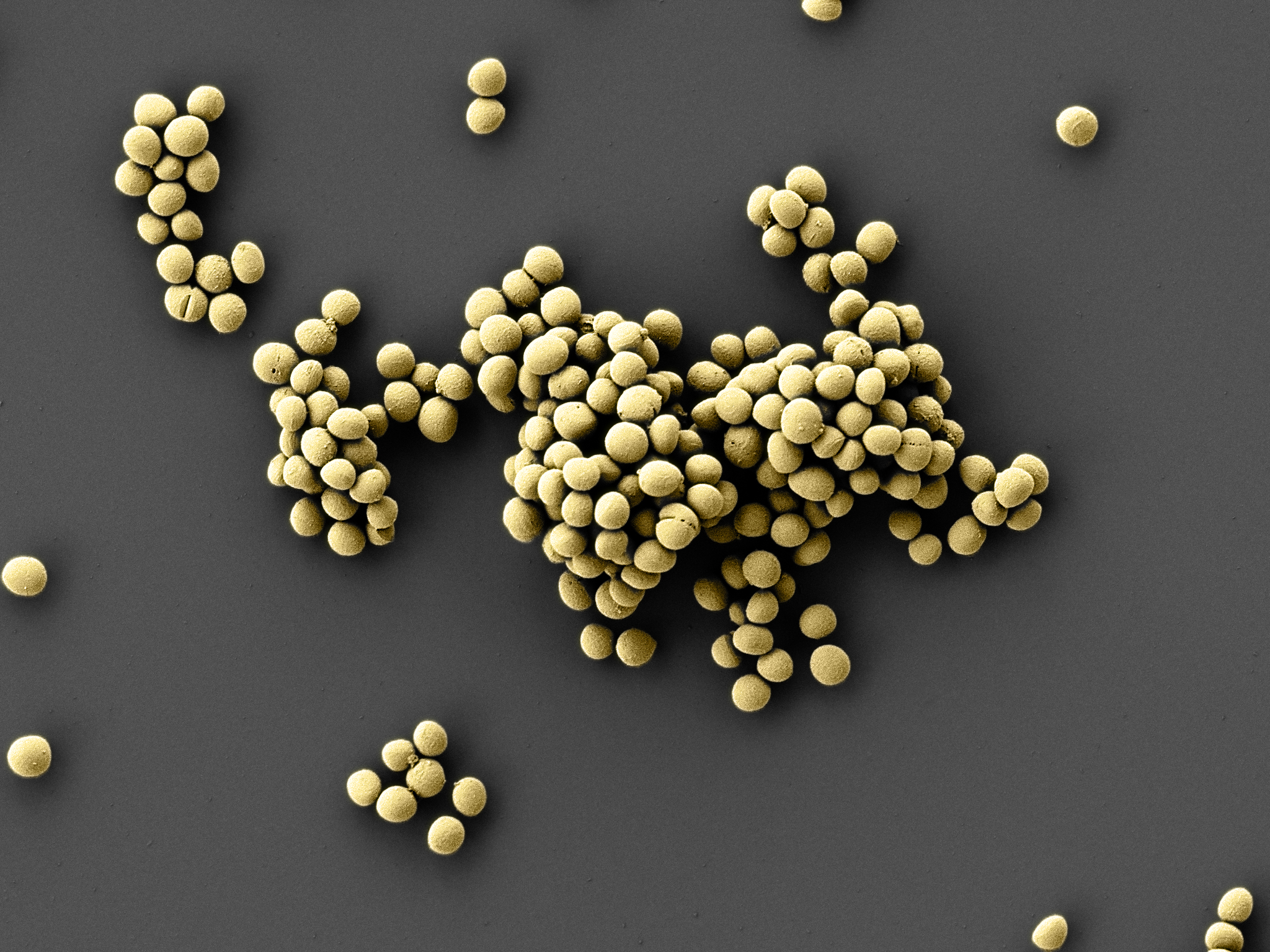Epifadin from the nasal microbiome
From the nose: novel antibiotic substance discovered
Antibiotics are becoming an increasingly blunt weapon against infectious diseases. The number of (multi-)resistant germs has been rising rapidly for years and even reserve antibiotics no longer work. The search for new drugs and treatment strategies is underway. Researchers at the University of Tübingen have now isolated a completely new antibiotic substance called epifadin from the microbiome of the human nose. It is effective against many different bacteria - including the dangerous hospital MRSA.
Antibiotics are drugs used to treat bacterial infections such as pneumonia, wounds and urinary tract infections. Originally produced in the natural metabolism of microorganisms to inhibit competitors, the strategy, depending on the substance, is either to prevent competitors from growing further or to eliminate them completely - for example by inhibiting cell wall synthesis.
 Dr. Bernhard Krismer from the Interfaculty Institute of Microbiology and Infection Medicine Tübingen (IMIT) and Prof. Dr. Stephanie Grond from the Institute of Organic Chemistry at the University of Tübingen and their respective teams have been working to isolate the antibiotic substance epifadin. © Jörg Jäger, University of Tübingen
Dr. Bernhard Krismer from the Interfaculty Institute of Microbiology and Infection Medicine Tübingen (IMIT) and Prof. Dr. Stephanie Grond from the Institute of Organic Chemistry at the University of Tübingen and their respective teams have been working to isolate the antibiotic substance epifadin. © Jörg Jäger, University of TübingenTo date, more than 90 antibiotics that are effective against different species of bacteria have been developed - a remarkable success that has nevertheless been stagnating over the past two decades.1) Although new substances can be expected in the future, many more are needed than are currently in the development pipelines, in particular preparations with novel mechanisms of action. The main reason for this is bacteria’s resistance to antibiotics, which has developed through years of many antibiotics being prescribed unnecessarily, improper intake and mass use in animal and plant breeding.
However, what would not be so severe in individual cases is increasingly becoming catastrophic, as resistance is passed on to the next generation via the bacterial genome. As a result, once highly effective drugs are becoming increasingly ineffective and the bacteria adapt to modifications again and again. Antibiotic resistance is now recognised as one of the greatest global threats to health and is extremely costly.2) Bacteria that are insensitive to several antibiotics are particularly dangerous, multidrug-resistant germs (e.g. methicillin-resistant Staphylococcus aureus, MRSA).
Epifadin as a weapon against competitors in the nasal microbiome
 Epifadin - a novel antibiotic substance in its isolated pure form. Due to its instability, it must be stored under protective glass containing shielding gas. © Jonas Ritz, University of Tübingen
Epifadin - a novel antibiotic substance in its isolated pure form. Due to its instability, it must be stored under protective glass containing shielding gas. © Jonas Ritz, University of TübingenResearchers from the "Controlling Microbes to Fight Infections" (CMFI) cluster of excellence at the University of Tübingen are now on the trail of a novel antibiotic substance with a potentially innovative mechanism of action against the dreaded hospital pathogen MRSA and other bacterial strains. Named epifadin, the novel substance was discovered by the researchers in the human nose. They were recently able to isolate it as a pure substance. "Epifadin is very unstable, which is why we initially had problems. Obtaining the pure substance was a very lengthy process," reports Dr. Bernhard Krismer, research group leader at the Interfaculty Institute of Microbiology and Infection Medicine Tübingen (IMIT). "Together with the University’s Department of Organic Chemistry, we eventually managed to accumulate, isolate and store the pure substance despite its short shelf life, thereby allowing us to characterise it."
Krismer and his team have been studying the microbiome of the human nose for years. One of the things they have been focussing on is finding out why staphylococci - including Staphylococcus aureus - occur in the nose of all places, but only in one third of people. It was originally assumed this was down to differences in the nutrient supply but turned out not to be the case.
The researchers analysed and isolated the bacteria from nasal secretion samples. "When it became clear that the composition of the secretion was not responsible for this variation, it seemed obvious to us there were germs in the nasal microbiome that had the ability to eliminate competitors," explains Krismer. "We tested our collection against a variety of bacteria and noticed two strains that inhibited the growth of MRSA: Staphylococcus lugdunensis, our first research highlight that produced the antibiotic substance lugdunin,3) and a Staphylococcus epidermidis strain that produced epifadin4). We initially put the latter on the back burner due to its lack of stability. The isolation of just a few micrograms of epifadin from more than 100 litres of starting material was like doing a doctoral thesis, hugely extended the project time and is still causing problems. Chemists are therefore in the process of synthesising artificial molecules with a similar structure and antimicrobial effect to epifadin that are stable and easier to work with."
Three-part polypeptide with chemical novelty value
 Scanning electron micrograph of Staphylococcus epidermidis. The bacterial strain lives in the human nose, among other places, and produces epifadin. © Jeremiah Shuster, University of Tübingen, Tübingen Structural Microscopy Core Facility / Coloration: Elke Neudert, University of Tübingen
Scanning electron micrograph of Staphylococcus epidermidis. The bacterial strain lives in the human nose, among other places, and produces epifadin. © Jeremiah Shuster, University of Tübingen, Tübingen Structural Microscopy Core Facility / Coloration: Elke Neudert, University of TübingenEpifadin is considered a completely innovative representative of a new class of active substances, and not just because it is only active for a few hours. Its polyene structure (i.e. a compound with several C=C double bonds) also has chemical novelty value. The complete molecule consists of three components: firstly a head consisting of five amino acids, secondly the polyene component and finally a modified amino acid - a tetramic acid - which presumably acts like a warhead on foreign cells. "This combination of building blocks into a polypeptide has never been chemically known before," says the microbiologist. "We now also know the critical breaking point that we need to chemically modify: the polyene structure, which is extremely sensitive to light."
In microscopic studies, the researchers observed that epifadin very quickly led to the lysis of MRSA cells. However, the underlying mechanism is still unclear; one reason might be that the substance irreparably damages the cell membrane. This will now be clarified in follow-up studies as soon as synthetic molecules with the same structure and effect as epifadin are available and stable enough to carry out further biological and chemical analyses. The CMFI team is currently researching the resistance mechanism - a not-insignificant issue that arises with every new antibiotic.
Natural broad-spectrum antibiotic that the body already has at its disposal
However, it is already clear that epifadin, a substance produced by the bacterium Staphylococcus epidermidis, which occurs naturally on the skin and nasal mucosa of almost all humans, is an extremely broad-spectrum antibiotic against many different competing bacterial strains. Its unstable chemical structure and the fact it is only active for a few hours is not necessarily a disadvantage. What is presumably intended as a means of limiting collateral damage in bacterial antagonists might also be able to prevent the kind of damage and side effects in humans that are common with current broad-spectrum antibiotics treatments.
As far as practical application is concerned, it might be conceivable to colonise epifadin-producing staphylococci locally as a probiotic in the nose or on the skin and thereby suppress the growth of pathogens. This would prevent bacterial infections by natural means and could, for example, eliminate MRSA from the nasal mucosa of patients at risk. Overall, this would be an extremely promising new strategy for the future, as Krismer says: "This will be one of our approaches in future work - applying competitive bacteria and using them as colonisers so we can eliminate problem germs in the long term."
Infobox: Tübingen discovery - two new antibiotic substances
Back in 2016, a previously unknown antibiotic substance with a unique structure was discovered at the University of Tübingen: lugdunin from Staphylococcus lugdunensis. Further research is currently underway: the aim is to produce the bacteria in accordance with GMP guidelines in order to apply them to the noses of volunteers and eliminate Staphylococcus aureus.
Epifadin from Staphylococcus epidermidis IVK83 now becomes the second representative of an unknown class of active substances that is able to kill microorganisms.
The following research institutions were involved in the work:
Interfaculty Institute of Microbiology and Infection Medicine (IMIT), University of Tübingen with Prof. Dr. Andreas Peschel, Dr. Bernhard Krismer, Prof. Dr. Heike Brötz-Oesterhelt and their work groups.
Institute of Organic Chemistry, University of Tübingen with Prof. Dr. Stephanie Grond and her work group.